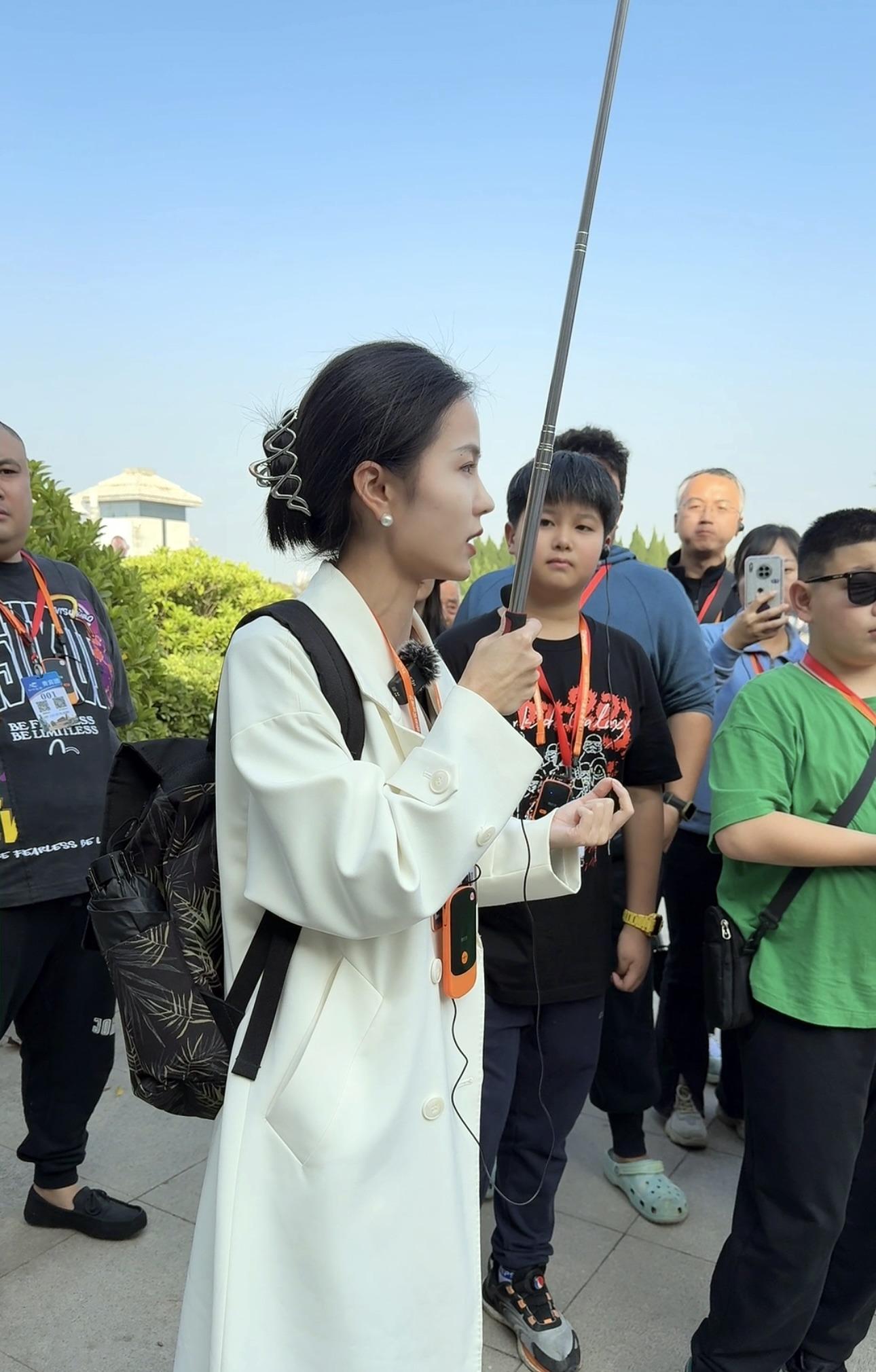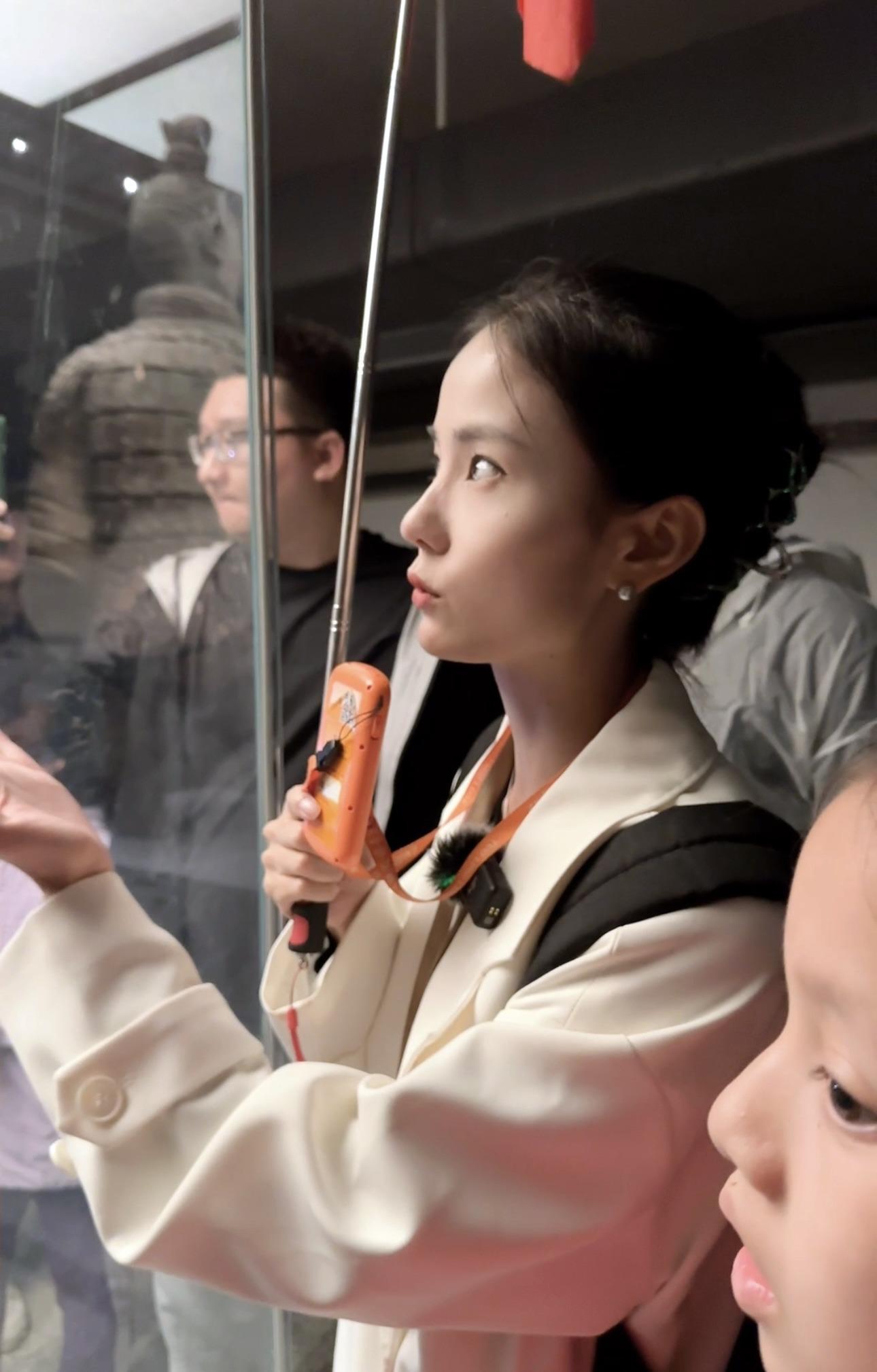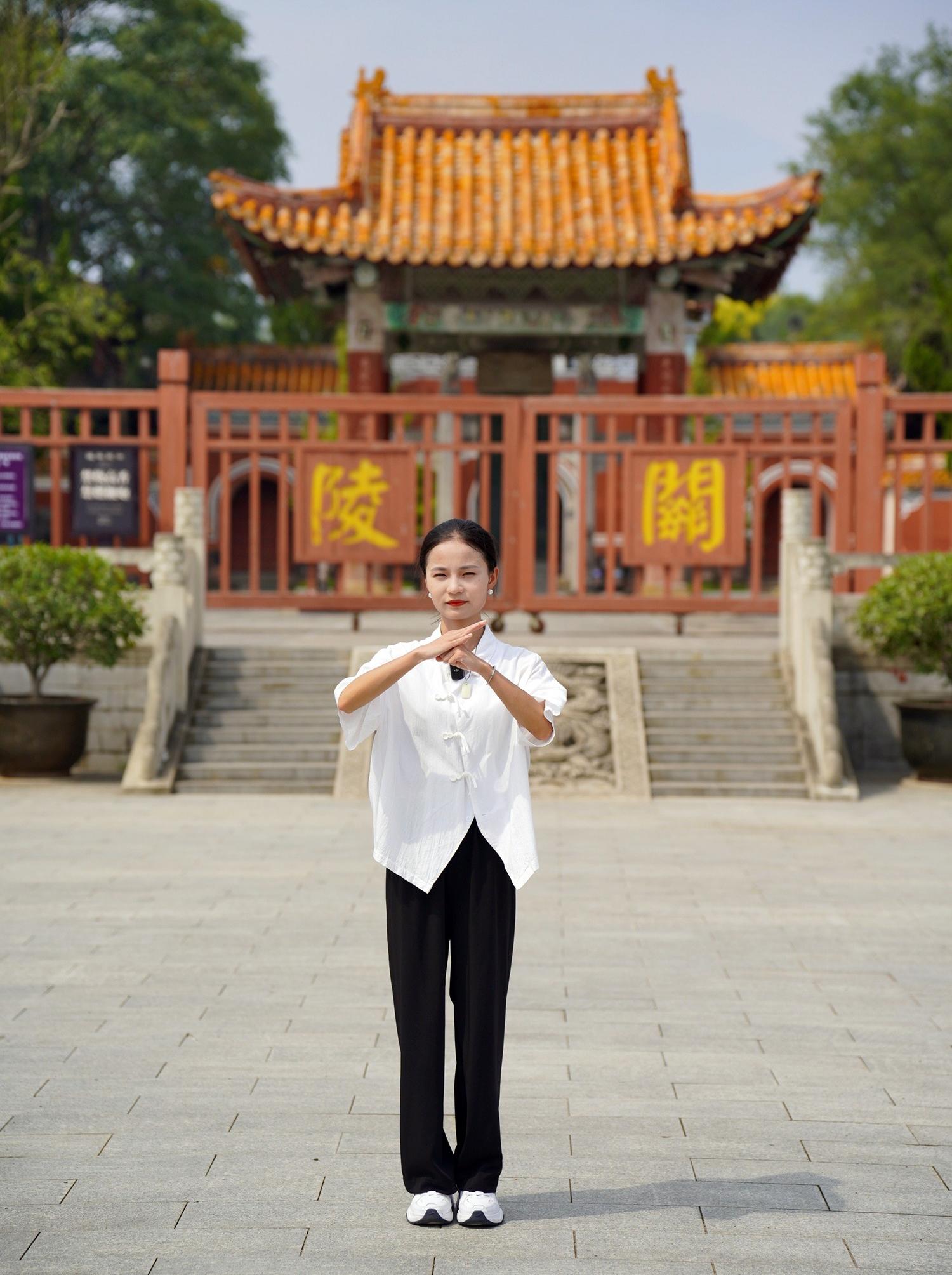Xi'an tour guide informs and entertains her audience as she brings the city's fascinating and intriguing past to life, Yang Feiyue reports.
 Tour guide Wang Yu explains the historical background and details of specific cultural relics to visitors at the Emperor Qinshihuang's Mausoleum Site Museum in Xi'an, Shaanxi province. (PHOTO PROVIDED TO CHINA DAILY)
Tour guide Wang Yu explains the historical background and details of specific cultural relics to visitors at the Emperor Qinshihuang's Mausoleum Site Museum in Xi'an, Shaanxi province. (PHOTO PROVIDED TO CHINA DAILY)
A squatting terracotta warrior down on one knee becomes a trove of knowledge as a result of Wang Yu's thought-provoking explanation.
"It's a top treasure at the Emperor Qinshihuang's Mausoleum Site Museum, and called a star of fortune," says the tour guide from Xi'an, Shaanxi province.
Our country has put a premium on traditional culture, and a tour guide acts like a bridge connecting it to the public.
Wang Yu, tour guide
Then, anticipating curious tourists' questions, the young woman in her 20s goes on to explain how it survived the test of time, whereas countless counterparts were turned into fragments.
"The kneeling position made it 1.2 meters, lower than many higher statues that might shield it from earthquakes and land collapse," Wang explains.
She then asked her audience to focus on the facial features of the warrior.
"The broad forehead, high cheekbones, low nasal bridge and monolid eyes are typical of people in the Guanzhong area (mainly Shaanxi)," she notes.
"See the fine lines around the Terracotta Warriors' eyes and on the palms and bottom of their feet, they convey the craftsmanship of ancient times," she adds.
As she responds to a string of intriguing questions, like how the pottery figurines were made and restored from fragments of debris, she states that the restoration process is "an inheritance of the spirit and a symbolism of cultural confidence", which often stirs up a wave of appreciative applause from her audience.
Wang doesn't even miss small details in the armor structure, such as how the difference of the overlapping plate arrangement in the upper and lower parts of the armor allowed for more flexible movement.
 Tour guide Wang Yu explains the historical background and details of specific cultural relics to visitors at the Emperor Qinshihuang's Mausoleum Site Museum in Xi'an, Shaanxi province. (PHOTO PROVIDED TO CHINA DAILY)
Tour guide Wang Yu explains the historical background and details of specific cultural relics to visitors at the Emperor Qinshihuang's Mausoleum Site Museum in Xi'an, Shaanxi province. (PHOTO PROVIDED TO CHINA DAILY)
She usually spends three hours in the morning livestreaming tours of the museum and other major tourist attractions in the city, and then receives group travelers in the afternoon. Often wearing a light green suit jacket, with her hair pulled back, Wang moves among various attractions in Xi'an, explaining local history to a growing number of visitors.
"Daily numbers peaked at 20,000 since I started livestreaming tour in May, and more than 70 percent of them are newcomers on a daily basis," Wang says.
She says viewers found that they either haven't been to the museum before or had an unexplained tour, and then discovered their curiosity was satisfied by Wang's explanations.
To date, she has amassed more than 3.3 million followers on her account at the short-video platform Douyin where she is known as Jiemo (mustard).
The contrast between her youthful vitality and her smooth delivery of historical events has won her praise from both tourists and online viewers.
Many viewers have left comments about how they watched her video clips more than once just to take in all the interesting stories behind the cultural relics.
This, in turn, spurs Wang to make further inroads in local history and meet the rising expectations of her audience, she says.
"Our country has put a premium on traditional culture, and a tour guide acts like a bridge connecting it to the public," she says.
Wang studied tourism management at a college in Hunan province during 2016-20, a major she chose as she believed it would bring more opportunities to travel.
Yet, the course exposed her to the pleasure of history and woke her up to the long history of her hometown Xi'an.
Wang started to work as a guide at a local agency after graduation.
She first dug into the culture of the Qin (221-206 BC) and Tang (618-907) dynasties, focusing on attractions like the Huaqing Pool, a hot spring-endowed imperial palace, and the Terracotta Warriors.
"At the beginning, I read a lot of history books about the Qin and Tang dynasties, and watched documentaries," she says.
 The rising recognition of Wang's tours has led to her being invited to promote tourism in Yichang city, Hubei province. (PHOTO PROVIDED TO CHINA DAILY)
The rising recognition of Wang's tours has led to her being invited to promote tourism in Yichang city, Hubei province. (PHOTO PROVIDED TO CHINA DAILY)
Then, she expanded into the Western Han Dynasty (206 BC-AD 24).
As tourism screeched to a halt during COVID-19 in 2021, Wang's company arranged for her to give livestream tours.
"It was a very forward-looking decision," Wang says.
She adds it prompted her to read up on more history to better present herself before the growing online audience, and pay more attention to details.
On her mobile phone, Wang has preserved documents that record her work notes and sources of inspiration during tours.
For instance, the Terracotta Warriors folder contains 56 files that highlight knowledge about specific artifacts and sites dotting the Qinshihuang museum, as well as questions that Wang believes will pique tourists' curiosity, such as why the terracotta army should be restored, and why Qinshihuang's mausoleum was built in the Lishan Mountains.
Her ability to express herself significantly improved in the process.
"The sheer volume of viewers made me feel like I had to do a better job telling a more appealing story," she says.
According to Zhao Haifeng, who is in charge of operations at the company, Wang has set aside time to learn every day, burying her head in anything that is related to history.
"She is on her way to becoming an expert in her field," Zhao says.
In the current fiercely competitive tourism industry, the cultural and tourism market needs more expert tour guides like Wang, says Zhang Zhongde, a commentator in the field of culture and tourism.
"They not only possess deep professional knowledge but can also adeptly convey cultural significance in a simple and engaging manner, providing tourists with unique and in-depth travel experiences," Zhang adds.
"Under their guidance, tourists can gain deeper insights into history, culture and local customs, thereby enhancing their travel experiences. This style of tour guiding is of great significance in promoting the transformation and upgrading of the cultural and tourism market and improving the overall service quality of the tourism industry."
Wang takes pride in her line of work.
She still remembers how a Chinese girl from America felt proud of her roots after going on one of her tours.
Wang has become something of a celebrity tour guide. Speaking about her future plans, she says she will continue getting to the bottom of other historical sites in the city and connecting history with the present day.
"I genuinely enjoy this profession, and I derive a sense of self-worth from it," she says, adding that it makes her proud if out-of-town visitors come to appreciate the Terracotta Warriors, or develop an interest in Xi'an's historical and cultural heritage through her explanations.
Contact the writer at yangfeiyue@chinadaily.com.cn


